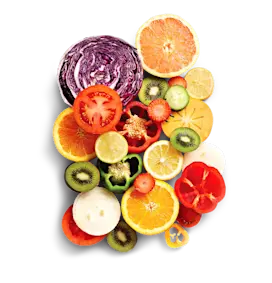The Future of Alternative Protein Sources: Innovating With New Materials and Technologies
The Future of Alternative Protein Sources: Innovating With New Materials and Technologies
The Future of Alternative Protein Sources: Innovating With New Materials and Technologies
10 Août 2021
John McCurdy
To say that the demand for alternative sources of protein is on the rise would be an understatement. The global meat substitutes sector is valued at $20.7 billion and that’s on track to increase to $23.2 billion by 2024. And the global dairy alternative sector comes in right behind at $20.5 billion with an expected compound annual growth rate (CAGR) of 12.5% through 2028.
Various factors are driving consumers to incorporate these new products in their diets, including health benefits, sustainability concerns and animal welfare. Your food and beverage business can capitalize on this trend, but it will be vital to identify just what your customers are interested in and how you can deliver something innovative and exciting that satisfies their desires.
Here, we’ll discuss some of today’s most popular protein alternatives, the new technologies and ingredients that are being used in their production, and the technology you’ll need to move into this space confidently. With this information, you’ll be better equipped to experiment with new meat- and dairy-free versions of your established offerings, as well as entirely new product lines.
Success Stories: Proven Alternative Protein Products
Beyond Meat and Impossible Foods have established the viability of plant-based burger alternatives and continue to duke it out for their respective shares of the market. Meanwhile, soy and almond milks have been a staple of store shelves for years, and now more than one third of consumers say they use a dairy milk alternative at least once a week.
Other categories have also seen popular protein alternative products emerge. Chicken substitutes like those in Kroger’s Simple Truth line are becoming increasingly prevalent, while Krave and Gardein have launched offerings in the meat snack space and Good Catch seafood alternatives are being pushed at retail.
Of course, all this isn’t to say that more traditional alternatives have been left behind. Beans, lentils and quinoa offer between 8 and 19 grams of protein per one-cup serving and have adaptable textures and tastes that lend them versatility.
Finally, nut butters, tofu and tempeh are also common options. Just keep in mind that should your food and beverage business explore any lines involving the latter three, you’ll need to make sure your traceability food safety precautions are up to par, as peanuts, tree nuts and soy are all among the FDA’s eight biggest allergen concerns.
What’s Next: Emerging Technologies and Materials in Protein Alternative Production
Even with the rapid expansion of the alternative protein sector and several well-regarded brands making names for themselves in the space, it’s likely that we’ve merely scratched the surface in terms of developing the ideal techniques for production and discovering ingredients to use.
For example, pea protein—which normally appears in a powdered form but is also used in more complex formulations—is a relative newcomer with lots of promise. It boasts a high Protein Digestibility-Corrected Amino Acid Score (PCDAAS), a key metric that assesses both ease of digestion and amino acid content, and can be used in both solid food and beverage products.
What’s more, pea protein and other powdered protein sources free manufacturers from the limitations and challenges that come from working with whole components. With a scientifically engineered isolate, businesses can reduce waste and eliminate unwanted byproducts that might come with using the original, unaltered form of the ingredient.
Yeast protein is another alternative protein on the rise, and it’s one of a few sources that utilizes fermentation in its production. By leveraging a natural process to separate the protein content from the rest of the material, it’s a more sustainable option, and it has the added benefit of also serving as a fairly close approximate to cheese in many applications.
Still more possibilities with great potential exist, including mung beans (already commonly used to create plant-based egg products), navy beans, sunflower (as in Sunflower Family’s organic sunflower haché), potato, rice, duckweed (or lemna, as it is referred to by leading provider Plantible) and various kinds of fungi. And of course, cultured and lab-grown meat, while not strictly a protein alternative in the sense of actually using a different ingredient as the source, is an exciting development that made its restaurant debut in late 2020 at Singapore’s 1880 restaurant.
Meanwhile, technologies like high-pressure processing (HPP) are helping to keep products simpler and more pure, eliminating the need for binding agents and preservatives in many cases. Finally, a move toward more fresh alternative protein sources has begun, as consumers are increasingly wanting to take home a raw form of the product—as opposed to frozen or pre-prepared—to incorporate into their own recipes.
Offering something with an experiential aspect that can be a part of customers’ comfort foods and favorite dishes could be a huge differentiator for your food and beverage business.
Facilitating the Future: Enterprise Resource Planning Software
Testing out new products can be easier said than done—you need to give your research and development teams the time and flexibility to experiment, tweak and refine in order to create a worthwhile new line. What’s more, introducing new materials into your environment comes with concerns for traceability, sanitation and, in some cases, allergen management.
Thankfully, there are solutions designed to cover these bases and more. Food and beverage industry-specific enterprise resource planning (ERP) systems give organizations like yours the control and flexibility you need. With a purpose-built food ERP in place, you’ll have complete control over recipe and formula management, which will empower your R&D teams, and also be able to gather and maintain all relevant traceability information in one integrated database.
These all-in-one platforms integrate with your smart sensors, scanners and scales to ensure that ingredients, lots and shipments are carefully monitored, inspected and evaluated and can be precisely tracked in the case of a contamination or production error. They also come with robust analytic tools that can help you understand just how efficient the manufacture of your new protein alternative products is—as well as how profitable they are once they’ve launched to market.
Maintaining accurate and up-to-date facts and figures is more important than ever with tightening food regulations and consumers’ increased demand for transparency. The peace of mind that food ERP solutions offer with reliable, real-time readings and metrics is invaluable, and it can afford your company the agility necessary to seize new opportunities in alternative protein products.
If you want to hear more about Aptean Food & Beverage ERP, our best-in-class system for food and beverage businesses of all sizes, contact us today. Our teams will be happy to let you know how our offerings can facilitate your brand’s growth in alternative protein sources.
Prêt à transformer votre entreprise ?
Nous avons les solutions ERP spécialisées dont vous avez besoin pour relever les défis de votre secteur.



